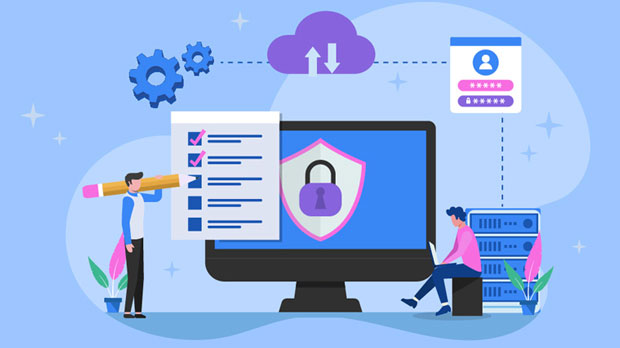When it comes to web scraping, having access to a reliable proxy pool is crucial to ensure smooth, anonymous, and efficient data collection. Proxysite and PYPROXY are two popular proxy services that offer IP pools for various use cases, including web scraping. In this article, we will dive deep into the quality of the IP pools provided by Proxysite and PyProxy, comparing their features, performance, and suitability for web scraping. Through a detailed analysis, we will assess the pros and cons of each service and determine which one stands out in terms of IP quality and reliability for web scraping applications. Understanding the Role of Proxy Pools in Web ScrapingIn the world of web scraping, proxies play a significant role in ensuring the effectiveness of data extraction. Proxies act as intermediaries between the scraper and the target website, masking the scraper's IP address and ensuring anonymity. This is crucial because websites can detect scraping activities and block or limit access based on the origin of the IP address. A reliable proxy pool is essential for web scraping as it allows the scraper to rotate through multiple IPs, preventing detection and reducing the risk of getting banned.What is Proxysite and How Does Its IP Pool Perform?Proxysite is a proxy service that provides users with access to a large pool of proxies. These proxies are commonly used for browsing and web scraping purposes. The service offers various types of proxies, including HTTP, HTTPS, and SOCKS5, which are suitable for different use cases. Proxysite claims to offer high-speed connections, stable uptime, and an extensive IP pool, but how does this perform in a real-world web scraping scenario?IP Pool Diversity and QualityOne of the most important factors in evaluating a proxy service is the diversity and quality of the IP pool. Proxysite offers a large selection of IPs from different geographic regions, which is crucial for scraping data from websites that employ geo-targeting or regional blocking. The pool consists of residential and datacenter IPs, providing a balance between speed and anonymity.However, the quality of these IPs may vary. Residential IPs tend to be more reliable and harder for websites to detect as they appear to be coming from real users. Datacenter IPs, on the other hand, are often faster but are more likely to be flagged by anti-scraping tools. This means that Proxysite’s IP pool could work well for general scraping tasks, but websites with advanced anti-bot systems might detect and block certain IPs.Speed and ReliabilityFor web scraping, speed and reliability are key. Proxysite offers relatively fast connections, but the speed may fluctuate depending on the type of proxy (residential or datacenter) and the geographic location. residential proxies tend to be slower but more reliable, while datacenter proxies are faster but may face more frequent bans. This makes Proxysite suitable for medium-scale scraping tasks that do not require extremely high speeds or the ability to scrape large volumes of data in a short period.What is PyProxy and How Does Its IP Pool Perform?PyProxy is another proxy service provider that offers a range of proxy options for web scraping and other use cases. PyProxy provides access to rotating proxies that automatically switch between IP addresses, which is particularly useful for web scraping. Similar to Proxysite, PyProxy offers residential and datacenter proxies, but the key difference lies in the implementation and reliability of its IP pool.IP Pool Diversity and QualityPyProxy's IP pool is designed to offer a high level of diversity in terms of geographic location, with a focus on providing proxies from countries around the world. This ensures that users can access region-specific content without issues. PyProxy claims to have a large selection of residential proxies, which are generally harder to detect and block compared to datacenter proxies.One of the advantages of PyProxy over Proxysite is its use of more high-quality residential IPs, which makes it a better option for long-term scraping projects. Websites that deploy sophisticated anti-bot mechanisms are less likely to detect residential IPs as they appear to come from real users. This makes PyProxy a more reliable choice for scraping websites with advanced security measures.Speed and ReliabilityWhen it comes to speed, PyProxy offers competitive performance. The service boasts low-latency connections and high uptime, which is critical for web scraping activities that require continuous operation. PyProxy’s rotating proxies also help in ensuring smooth and uninterrupted scraping sessions, as the IP addresses change automatically, reducing the likelihood of being blocked.In terms of reliability, PyProxy’s focus on residential proxies makes it a more robust option for web scraping projects that require high anonymity and the ability to bypass restrictions. However, the speed of PyProxy’s residential proxies might be slower compared to datacenter proxies, but the trade-off is typically worth it for web scraping, as the risk of being blocked is significantly reduced.Comparison: Proxysite vs PyProxy for Web Scraping1. IP Pool QualityWhen comparing the IP pool quality of Proxysite and PyProxy, PyProxy stands out as the better option for web scraping. This is primarily due to its emphasis on high-quality residential proxies, which provide a higher level of anonymity and are less likely to be flagged by anti-bot systems. Proxysite, while offering a diverse IP pool, includes a larger number of datacenter proxies, which are faster but more easily detectable.2. Speed and PerformanceProxysite is generally faster than PyProxy, especially when using datacenter proxies. However, the risk of getting blocked is higher when using Proxysite for web scraping, particularly for websites with strong anti-scraping measures. PyProxy, on the other hand, may offer slower speeds, especially when using residential proxies, but the reliability and reduced likelihood of getting blocked make it a better long-term solution.3. Pricing and Cost-EffectivenessBoth Proxysite and PyProxy offer competitive pricing, but PyProxy’s focus on residential proxies may come at a higher cost. However, this investment may be worth it for large-scale or long-term scraping projects, as residential proxies provide higher success rates in bypassing blocks. Proxysite can be a more cost-effective option for smaller scraping tasks or when speed is prioritized over anonymity.4. Suitability for Different Types of Web ScrapingFor light or medium-scale scraping tasks, Proxysite’s IP pool can be a suitable option, especially when speed is a priority. However, for large-scale scraping or scraping websites with advanced anti-scraping systems, PyProxy is the better choice due to its emphasis on residential proxies and its ability to bypass sophisticated security mechanisms.Conclusion: Which One is More Suitable for Web Scraping?In conclusion, both Proxysite and PyProxy offer valuable proxy services for web scraping, but the best option depends on the specific needs of the user. If you are looking for a fast and cost-effective solution for light to medium-scale scraping tasks, Proxysite can serve your needs. However, for high-anonymity, long-term projects, or scraping websites with strong anti-scraping defenses, PyProxy with its emphasis on residential proxies is the superior choice. By considering factors such as speed, reliability, IP quality, and cost, you can make an informed decision about which proxy service is the best fit for your web scraping needs.
Mar 21, 2025
![arrow]()




























































